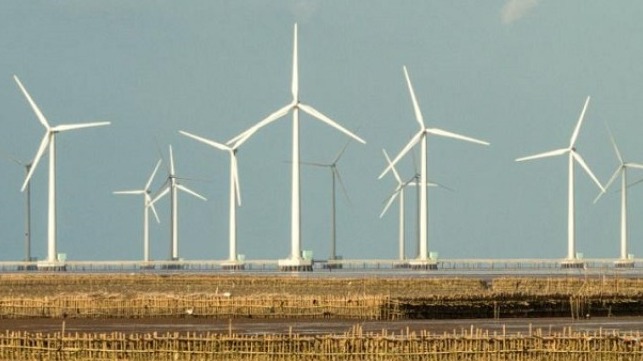Asia Poised to Become Dominant Market for Wind Energy

Asia could grow its share of installed capacity for onshore wind from 230GW in 2018 to over 2,600GW by 2050, a new report by the International Renewable Energy Agency (IRENA) finds.
By that time, the region would become a global leader in wind, accounting for more than 50 percent of all onshore and over 60 percent of all offshore wind capacity installed globally.
According to Future of Wind, global wind power could rise 10-fold reaching over 6,000GW by 2050. By mid-century, wind could cover one third of global power needs and – combined with electrification – deliver a quarter of the energy-related carbon emission reductions needed to meet the Paris climate targets. To reach this objective, onshore and offshore wind capacity will need to increase four-fold and 10-fold respectively every year compared to today.
IRENA’s Director-General Francesco La Camera says. Our roadmap for a global energy transformation to 2050 shows that it is technically and economically feasible to ensure a climate-safe, sustainable energy future. Unlocking global wind energy potential will be particularly important. In fact, wind energy could be the largest single source of power generation by mid-century under this path. This would not only enable us to meet climate goals, but it would also boost economic growth and create jobs, thereby accelerating sustainable development.”
The global wind industry could employ over 3.7 million people by 2030 and more than six million people by 2050, according to the report. These figures are respectively nearly three times higher and five times higher than the slightly over one million jobs in 2018.
To accelerate the growth of global wind power over the coming decades, scaling up investments will be key. On average, global annual investment in onshore wind must increase from today $67 billion to $211 billion in 2050. For offshore wind, global average annual investments would need to increase from $19 billion to $100 billion in 2050.
Statistical highlights:
• Asia would account for more than 50 percent of global onshore wind power installations by 2050, followed by North America (23 percent) and Europe (10 percent). For offshore, Asia would cover more than 60 percent of global installations, followed by Europe (22 percent) and North America (16 percent).
• Within Asia, China would take the lead with 2,525GW of installed onshore and offshore wind capacity by 2050, followed by India (443GW), Republic of Korea (78GW) and South-East Asia (16GW).
• Globally, the levelized cost of electricity (LCOE) for onshore wind will continue to fall to 2-3 cents USD/kWh by 2050 compared to six cents USD/kWh in 2018. Costs of offshore wind will drop significantly to 3-7 cents USD/kWh by 2050 compared to 13 cents USD/kWh in 2018.
• Wind turbine size for onshore applications will increase, from an average of 2.6MW in 2018 to 4-5MW for turbines commissioned by 2025. Offshore applications will likely increase to 15-20MW in a decade or two. Floating wind farms could cover around 5-15 percent of the global offshore wind installed capacity (almost 1,000GW) by 2050.
The report is available here.
